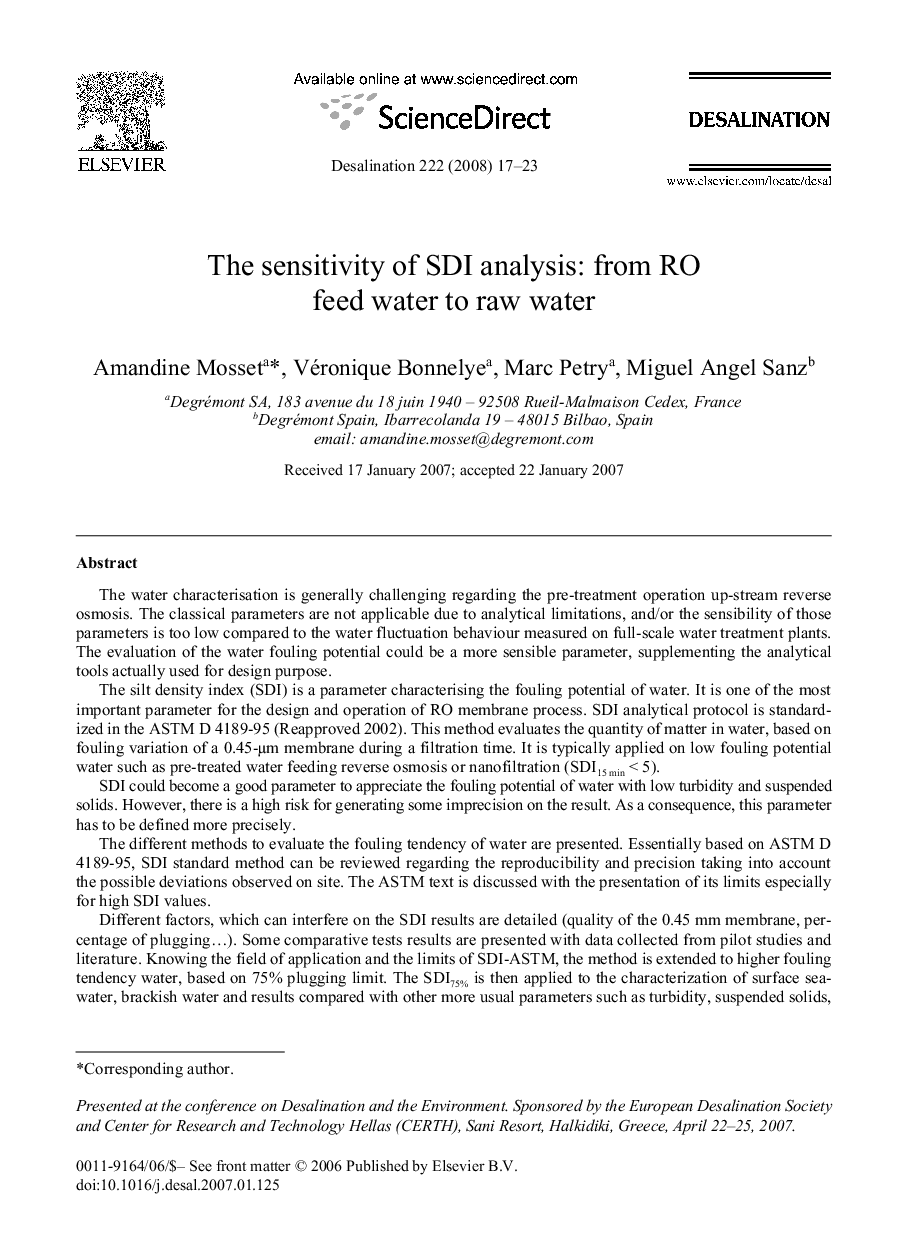| کد مقاله | کد نشریه | سال انتشار | مقاله انگلیسی | نسخه تمام متن |
|---|---|---|---|---|
| 627286 | 1455468 | 2008 | 7 صفحه PDF | دانلود رایگان |

The water characterisation is generally challenging regarding the pre-treatment operation up-stream reverse osmosis. The classical parameters are not applicable due to analytical limitations, and/or the sensibility of those parameters is too low compared to the water fluctuation behaviour measured on full-scale water treatment plants. The evaluation of the water fouling potential could be a more sensible parameter, supplementing the analytical tools actually used for design purpose.The silt density index (SDI) is a parameter characterising the fouling potential of water. It is one of the most important parameter for the design and operation of RO membrane process. SDI analytical protocol is standardized in the ASTM D 4189-95 (Reapproved 2002). This method evaluates the quantity of matter in water, based on fouling variation of a 0.45-μm membrane during a filtration time. It is typically applied on low fouling potential water such as pre-treated water feeding reverse osmosis or nanofiltration (SDI15 min < 5).SDI could become a good parameter to appreciate the fouling potential of water with low turbidity and suspended solids. However, there is a high risk for generating some imprecision on the result. As a consequence, this parameter has to be defined more precisely.The different methods to evaluate the fouling tendency of water are presented. Essentially based on ASTM D 4189-95, SDI standard method can be reviewed regarding the reproducibility and precision taking into account the possible deviations observed on site. The ASTM text is discussed with the presentation of its limits especially for high SDI values.Different factors, which can interfere on the SDI results are detailed (quality of the 0.45 mm membrane, percentage of plugging…). Some comparative tests results are presented with data collected from pilot studies and literature. Knowing the field of application and the limits of SDI-ASTM, the method is extended to higher fouling tendency water, based on 75% plugging limit. The SDI75% is then applied to the characterization of surface seawater, brackish water and results compared with other more usual parameters such as turbidity, suspended solids, algae, particles count, etc. This characterization is particularly helpful for pre-treatment operation and to detect some failure on its efficiency.
Journal: Desalination - Volume 222, Issues 1–3, 1 March 2008, Pages 17-23